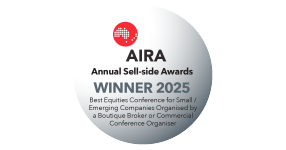You cannot eliminate the economic cycle, nor the impacts of inflation and taxation, but you can structure a strategy around your goals and objectives, your resources and time frame, and respond to the various opportunities and challenges as they come along.
You do not need to know the future, after all no one does, but you do need to have a robust framework for making investment decisions during both good times and bad.
When investing, there are four key principals you can apply with some common sense and over time, refine with knowledge and experience; Quality, Valuation, Diversification and Budgeting.
Quality
I would call out companies like; the CBA and Woolworths. They are large, prominent and conservatively financed. They have a long track record of profitability and dividends and they play an important role in the day-to-day lives of ordinary Australians.
Businesses like the CBA and Woolworths have the scale to invest and adapt to changes in technology, competition and regulation, and do so almost regardless of the prevailing economic conditions.
In good times, almost any business can make a profit, but during uncertain times you want the core of your strategy to focus on quality companies like; the CBA and Woolworths.
Valuation
As a starting point, I wouldn’t make it too complicated (it is better to be roughly right than precisely wrong) and would recommend using simple ratios, like a dividend yield.
If a company’s dividend has (a) been sustained for decades and (b) grown over time, (and there has been no material change to the company) then the dividend is likely to be sustainable.
The dividend yield, is simply calculated by dividing in the dividend by the current share price. You can then use the yield to compare the attractiveness of various alternatives e.g. CBA versus Woolworths, over various time periods, to determine if now is an attractive time to buy (or sell).
Of course, the current yield is only part of the picture, investors also need to consider the growth (or contraction) of future dividends.
Arguably the very best investments you can buy (at a reasonable price) will deliver many decades of strongly growing dividends and often this is achieved by the company combining a small dividend payout while retaining most of their profits for an effective program of innovation and investment.
Diversification
No one knows the future, so diversify. In my experience a balanced portfolio should have between 15 and 30 stocks, with minimum exposures of around 3% and maximum exposures of around 7% and the investments need to be spread across different industries with different economic drivers and risks.
Budgeting
Budgeting is all about having enough cash and cash flow to allow your investments to deliver on their potential. Why? Well because history is clear, share prices are volatile. True over time, the value of the Australian share market has grown by circa 5% p.a. but in almost every single year the volatility has been at least plus or minus 10%, with the occasional plus or minus 20% and the rare plus or minus 50%.
The extremes, both positive and negative have never been permanent (at least not for patient long term investors, who have held a diversified portfolio of quality companies) but these extremes do generate feelings of euphoria and panic.
So in my experience, budgeting (having sufficient cash and cash flow to never be a ‘forced’ buyer or seller) is an essential tool for navigating future volatility and the feelings of euphoria and panic that will inevitably follow.
The chart below is a simple way to illustrate the value of a diversified portfolio of Australian shares. The chart assumes the investor bought the 200 largest companies on the Australian stock exchange in July 1993 and has stayed invested in the largest companies ever since.
Each year they receive and spend the dividends, and on average, over time, those dividends have grown and have kept up with the cost of living (the dotted line represents 5.4% compound annual growth).

So what about the year ahead? The most immediate challenge can be summed up in one word, inflation. The catalyst for the current inflation, was a combination of covid lockdowns with multi-trillion dollar government spending packages. The end result, was that demand was sustained while supply was constrained. As a consequence, the supply chain has been hollowed out, leaving it exposed to future shocks, such as Russia’s invasion of Ukraine and the resulting sanctions.
The inflation has been most pronounced in the wealthiest countries who could afford (a) extended lockdowns and (b) the generous financial support packages. In effect, it is the wealthy countries competing for scarce resources, by outbidding their neighbour, which is driving up inflation and this is most evident in Europe, given their heavy reliance on Russian fossil fuels.
Inflation is calculated by measuring the change in the price of a ‘standard’ basket of goods. As can be seen in the chart below, the ‘household basket’ in the UK is typically; 43% services, 11% food and beverages, 3% electricity and gas, 3% fuel and lubricants and 39% general merchandise. However right now, 50% of the UK’s household inflation (currently around 13%p.a. and expected to above 10%p.a. throughout 2023) is coming from electricity and gas (principally used for household heating).

It is a similar story across Europe as they race to replace Russian fossil fuels before the start of winter. The current plan includes a doubling of Europe’s LNG imports, refurbishing and restarting any of the coal fired power stations that might have been mothballed in the last couple of years (and consequently rebuilding the coal stockpiles), and imposing caps on the consumption of electricity and gas, with the goal of reducing demand by at least 15%.
Europe is financially strong, but even with all the money in the world, if they do not have reliable energy, they will have to reduce their output or to put it another way, it is highly likely many European countries will be in recession in the coming months.
That being said, there are similar themes in Australia. Arguably our biggest challenge is the lack of labour. As can be seen in the chart below; unemployment is at a multi-decade low, while job vacancies are at record highs.

In short, a lack of labour can be as debilitating for an economy (and therefore everyone’s lifestyle and living standard) as a lack of energy, and the only sustainable solutions are; efficiency, productivity and population growth.
But right now, I remain optimistic that the Australian economy can slow down, without having to enter a recession. What’s more, if Europe does enter a recession, it will take some of the pressure out of the global supply chain, relieving some of the global inflationary pressures.
I am also hopeful, that as the winter flu season comes to an end, it will actually improve the overall work force productivity, as fewer people will be isolating at home.
Interest rates
Interest rates are rising, because a 0% interest rate (or even a 1%, 2% or 3% interest rate) can not be justified when unemployment is below 5% (currently around 3.5%).
However if there is any recession risk for Australia, it is due to the lack of supply of goods and services.
The demand is there, the money is there, but if you don’t have the parts and or the labour, you can not actually produce the required goods and services, so the economy shrinks.
Australian inflation is currently around 6% (which is roughly half of the UK, but still not great), while the RBA target range is for inflation to be between 2% and 3%. Within a range of 2% to 3% it is believed there is enough incentive and capacity in the economy, for businesses to innovate, invest and compete and sustainably bring on additional supply.
Extended periods of high inflation are simply evidence that demand is outstripping supply and the supply we do have, is going to those who have the greatest capacity to pay, not necessarily to the businesses who are going to invest and bring on additional supply.
Fortunately, inflation has only been above the target range for 12 months, so hopefully, the Australian inflationary feedback loop can be broken by moderating domestic demand. I am also hopefully, that after two and a half years of covid disruptions the global supply chain is making progress on diversifying and improving its resilience. Bringing all of this together, as I tried to say at the start, stick to quality, diversify and budget.
If your situation hasn’t changed, then chances are your strategy hasn’t changed. Review your plan, and if you need extra cash, it is not a bad time to be selling, with the market only down about 5% from recent highs. Equally if you have funds to invest, be patient and the normal volatility with throw up opportunities.
I know it is easy to say with hindsight, given the recent market rally, but over the last couple of months I have been buying; Wesfarmers, Carsales.com, Domino’s and Fortescue, and I am sure I will continue to do so.
If you have any questions about your portfolio or strategy please contact me.
More Information
Ken Howard is a Private Client Adviser at Morgans. Ken's passion is in supporting and educating clients so they can attain and sustain financial independence.
If you have any questions about your financial plan or your share portfolio, your strategy, investments or would just like to catch up, please do not hesitate to give me a call on 07 3334 4856.
General Advice warning: This article is made without consideration of any specific client’s investment objectives, financial situation or needs. It is recommended that any persons who wish to act upon this report consult with their investment adviser before doing so. Morgans does not accept any liability for the results of any actions taken or not taken on the basis of information in this report, or for any negligent misstatements, errors or omissions.






.jpg)




